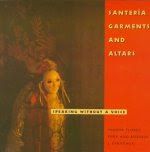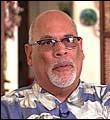
 Leah Subhar’s book, COPYCAT, introduces readers to Tzipora Stein. Tzipora longs to fit it. When the girl who has teased her in the past invites her to join the “in” crowd, Tzipora is thrilled, but there is a price to pay. Leah says, “I hope this book will help readers in some way when they need to decide between being ‘popular’ and doing what they think is right.”
Leah Subhar’s book, COPYCAT, introduces readers to Tzipora Stein. Tzipora longs to fit it. When the girl who has teased her in the past invites her to join the “in” crowd, Tzipora is thrilled, but there is a price to pay. Leah says, “I hope this book will help readers in some way when they need to decide between being ‘popular’ and doing what they think is right.”
Leah is a native of Denver, Colorado, lives in Jerusalem with her husband and children. She and her husband, “Uncle Reuven,” wrote and produced the popular children’s music series, “Uncle Reuven and the Simcha Train.” Leah’s articles about motherhood and family life appear in numerous publications, including Mishpacha Magazine and Mishpacha Junior. Her plays are produced in the United States, England, and Israel. She is currently working on an anthology of children’s stories, tentatively titled “Impact for Kids” (Targum Press).
Tell me about Copycat?
Copycat is the story of an eleven year-old girl who desperately wants to be part of the ‘in’ crowd. But she needs to decide how far she is willing to follow the crowd in order to be part of it. This question pervades the entire story, climaxing with a face-off between her and the school bully,where she is forced to make a choice: Will she stand up for what she believes in,even though doing so will cost her all of her friends and embarrass her in front of the entire school?
It’s a book that makes you think twice about who you want to be friends with!
What was the inspiration for the book?
When I was eleven,I was called Freckle Face and Shorty pie, just like my protagonist. I,too,struggled to belong.
The villain in my book is quite evil, too evil for a book nice Jewish kids are going to read! Or so I thought, until I spoke to the principal of a major Jewish girls school in New York: she told me that all the students in her school are required to sign a “Bully Contract!” This contract defines “bullying” and the punishment for first-time and repeat offenders. The school offers support to help “victims” learn how to cope and to stand up for themselves.
Before I heard that, I was tempted to tone down my villain, to make her more ‘pareve.’ But when I heard how prevalent the problem of bullying really is, I realized that my book has a timely and important message.
How did you become a children’s writer?
By writing. My Yiddish-speaking friends call it zitz fleishe. In English, it’s called ‘hard work’ — waking each morning and sitting at the desk to write. As a busy wife and mother of a large family, it’s hard to make the time. But even 200 words a day adds up to a book eventually. Mine did.
Why do I write specifically for children?
I’m not sure, but a few years ago, just for fun, my husband and I produced a music CD for kids called “Uncle Reuven and the Simcha Train.” It became a #1 Best-Seller! (Country Yossi Family Magazine Feb 2005)It started out as songs I made up when putting my children to sleep. I feel completely natural composing music for a young audience, and with writing it’s the same thing.
What interesting thing did you learn in the process of writing this book?
Great question, because whenever we set out to write something, we don’t realize how deeply we ourselves may be affected in the process. At least I did not think about it during my book’s beginning stages. Instead, it was all about how my readers will internalize my message, how they will be affected.
But somewhere deep into the process, as my protagonist struggled with her enemy, I discovered that I, too, struggled with the memories of my own pre-adolescent years. I had not fully gotten over being called “Four Eyes.” I’m still figuring out how to say with confidence and grace:“This is who I am.” Writing my book has taught me that no matter how much we consider ourselves “all grown up,” we still have far to go.
What is your favorite holiday?
My husband’s grandfather used to say when asked what his favorite food was: “The one I’m eating now.” My favorite holiday? The one I’m celebrating today! The Jewish calendar is so rich! I love sitting in our sukkah, eating matzah, bursting out in tears as the final shofar blasts at the end of Yom Kippur, and we all say:Next Year in Jerusalem!
Shabbat is really the center of everything that goes on in my home. I bake challah, make gefilte fish, matzah balls, potato kugel…the works! It’s so delicious! I’m not bragging, because Shabbat itself is the fabulous secret ingredient that makes all the food so yummy. We sing songs around the table — everybody is home, even the teenagers. Nobody is talking on the phone. We’re together. We talk. We’re family.
Leah, thank you for such thoughtful, inspirational responses! Best of luck with COPYCAT!

Santeria Garments and Altars is a literate, accessible, beautifully photographed book by a man who is a member/initiate in a house of Oshun. Its subtitle is, ‘Speaking Without A Voice.’ How appropriate! The emphasis is the striking photographs of the variety of altars to the different deities, members of a variety of houses preparing for, or engaged in aspects of worship.
By way of background information -- A ‘house’ is a group of devotees of a particular god or goddess under the leadership of a ‘babalawo’, or priest/priestess. Oshun is another one of the Seven African Powers who represents the archetypical female principle and the power of eros. Interestingly enough, abstinence or asexuality, and a virginal principle of female sexuality has no icon, nor any particular social importance.
Another interesting feature is that the author is a male practitioner, much in the tradition that the gods choose individuals to serve them regardless of gender. My own Catholic upbringing was full of gender separation, nuns as brides of Christ, servants of the male hierarchy, etc. While there are some tasks separated by sex, it does not appear to be as rigid, as attenuated as in a Christian/Catholic context.
One off the major tenets of this religious practice is the construction of altars, which every believer is required to do. There’s a synthesis between aesthetic and spiritual significance. It is considered one’s duty to create, as service to the deity to whom one has pledged oneself. A further illustration of the nexus between creativity and belief is the Santeria/Yoruba belief in ‘ache’, the universal life force present in all things. Each devotee is assumed to have within them the power to create a beautiful altar, one infused with ‘ache.’
In my performance pieces, there are ‘anchor ‘ points--static elements that have life infused into them. (In REM/Memory, there is a central, supine figure, hidden in a mass of blankets, who comes alive as the piece starts, and the nightmare begins. In Resurgam, a chaos of white fabric is stripped away to reveal a captive figure who finds release as the piece begins.) I see a similarity between a finished altar containing ‘ache,’ and a performance’s ‘anchor’pieces being the place where it all comes alive, more specifically, where it reflects at least the possibility of sacred ritual.
There are several points of connection for me here. When the author created an altar to Oshun, it was clear that it could also be seen as a ‘site-specific installation.’ Size of the space, mood of the space, prominent observation points are all taken into consideration. These are the same consideration I make with each piece, the same considerations any installation artist might make.
In the design of an altar dedicated to Oshun, ‘found’ elements are brought into the piece that symbolize her attributes. Since Oshun represents eros, obvious choices illustrate sensuality. Honey, honeycombs, silks and laces are standard items in such an altar. I constantly bring found items from daily life into my performances, hoping to create common imagery for myself and the audience as it unfolds as a shared experience. In Resurgam, during the 'communion’ section, I offer a papaya sliced in half to the audience, sharing its womb shape with them as the symbol of The Living Body--juicy, ripe, the source of all things, ever replenishing.
Lastly, I want to comment on the Santeria idea of ‘coolness.’ Essentially, it is the principle of balance, harmony, a reflection of the connectedness of all things. An altar, no matter how ornate, is not considered ‘cool’ if it does not have these attributes.
Even though my approach is spare, I try to layer things enough to suggest complicated ideas and experiences. It's work with a a consistent point of view, root motifs that I communicate to the audience, an arc of interconnectedness between myself, how I tell the story, the audience, and a unifying force that exists in the moment of performance, a force that I call Spirit.

Whatever you decide, these two guys are adorable! I love the exasperated look on that cat's face...like, what NOW??? This is beautiful :)
what a fun idea to work with. love it! can't wait to see what you do with it!
teri
This is wonderful. You have the cats expression perfect and the dog looks like a typical dog wanting to please. Great job.
Becky
hahaha, cute!
love it. Could you tell me what medium you used. I like the brushy effect in the background.
This is FANTASTIC Sarah! I love it. Great colours and very original concept! I really like the texture in this too. What do you use for your linework?
Other ideas for animals imitating others:
A bunny imitating a kangaroo? (of course I would come up with that living in Australia) - but could have the bunny strapping a pocket to his tummy.
Some animal imitating a raccoon? (wearing a mask)
a small bird imitating an owl (trying to turn head backwards)
something imitating an ostrich (sticking head in the sand)
oh I could come up with so many of these...! Does this help?
Thanks guys! Glad you like it :0) These are TERRIFIC ideas Lil Kim, thanks so much for your help!! You are on a roll, I can't wait to start drawing some of these up!
The background is acrylic, with an oil glaze over it. I added a soft pencil over the acrylic and the oils to give it more texture. And I outlined with colored pencil, too.
Thanks again everybody!!!
-Sarah
Sarah,
Sorry it's taken me a while to check in. This piece has a really nice combination of atmosphere and playfulness! I like the colors alot. I look forward to seeing more of them!
Kim
They are so cute. Nice work and I love the color. Great work.